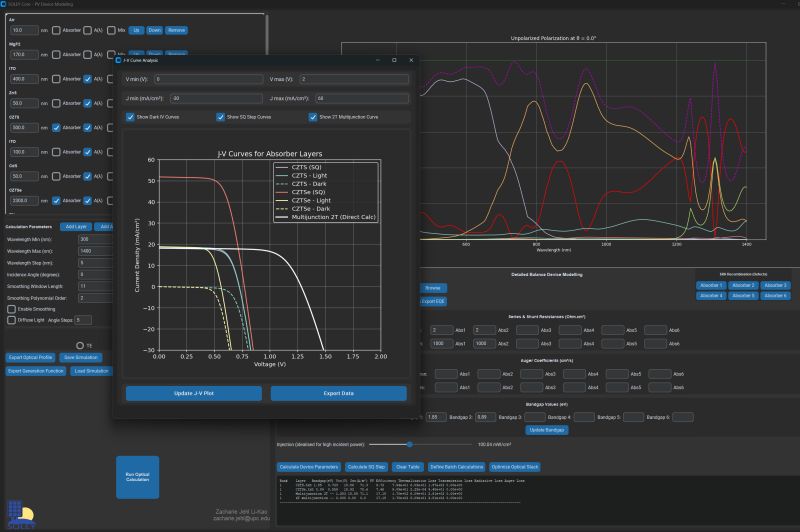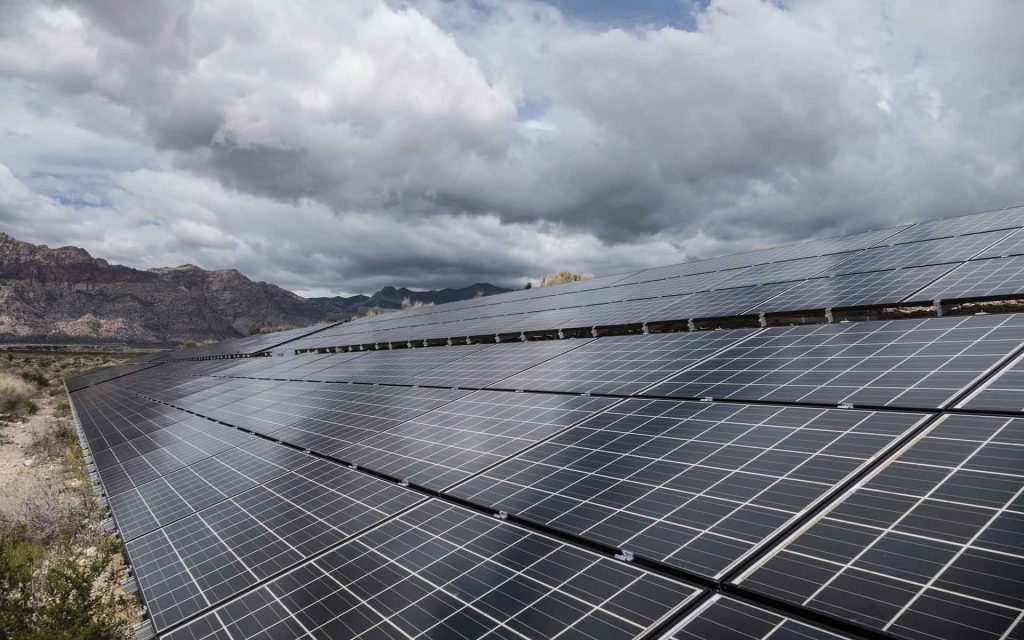Zacharie Jehl Li-Kao, a researcher in the Department of Electronic Engineering at the Polytechnic University of Catalonia (UPC), has developed Soley, an open-access simulation software designed to model the optical and electrical performance of photovoltaic solar cells.
Li-Kao emphasised that Soley is not intended to replace widely used tools such as solar cell capacitance simulator (SCAPS), but to complement them.
“Photovoltaic modelling packages, including the excellent SCAPS, are typically based on the drift-diffusion model. Soley uses a more thermodynamic approach and extends the concept of detailed equilibrium with Auger and, more importantly, with realistic SRH recombination,” he said. The software is available for Windows, Linux, and macOS.
Soley combines the Transfer Matrix Method (TMM) with an extended detailed equilibrium model to reproduce the behaviour of photodiodes under illumination.
This approach offers several advantages compared with drift-diffusion models, including the ability to work with fewer input parameters and to perform detailed equilibrium calculations quickly.
That speed enables high-performance batch calculations for brute-force optimisations, which Li-Kao notes can be more reliable than parameter tuning that risks convergence to unphysical values.
The software also supports direct or diffuse illumination, making it useful for applications such as indoor photovoltaics, optical layer stack optimisation, mixed-index materials, multijunction architectures, and generation function calculations.
Although primarily designed for thin films, Soley’s optical algorithm includes stability checks that allow for simulations of thick absorber layers and crystalline silicon solar cells. “Although it does not yet account for photon recycling, Soley natively handles multijunctions and includes a standalone optical engine that uses the transfer matrix to address cases where TMM typically doesn’t work,” Li-Kao said.
Soley features a graphical interface designed for ease of use.
“The goal of Soley is to complement existing drift-diffusion simulation tools, certainly not replace them. Its graphical user interface makes it accessible to a wide audience within the research community and a potentially valuable educational tool,” he added.
The software also allows users to upload example solar cells. Current examples include silicon, kesterite, perovskite (without transient effects), and tandem perovskite/silicon devices.
“I will expand the database and, over time, obtain optical data directly from the cloud. However, users must upload their own material data if the goal is to conduct serious research,” Li-Kao noted.
Soley is being further developed within UPC’s MNT-Micro and Nanotechnologies research group. Li-Kao also leads device modelling activities for the European COST Action Renew-PV consortium, which brings together academic and industrial researchers across Europe to advance inorganic chalcogenide thin-film photovoltaic technologies.
This content is protected by copyright and may not be reused. If you want to cooperate with us and would like to reuse some of our content, please contact: editors@pv-magazine.com.




By submitting this form you agree to pv magazine using your data for the purposes of publishing your comment.
Your personal data will only be disclosed or otherwise transmitted to third parties for the purposes of spam filtering or if this is necessary for technical maintenance of the website. Any other transfer to third parties will not take place unless this is justified on the basis of applicable data protection regulations or if pv magazine is legally obliged to do so.
You may revoke this consent at any time with effect for the future, in which case your personal data will be deleted immediately. Otherwise, your data will be deleted if pv magazine has processed your request or the purpose of data storage is fulfilled.
Further information on data privacy can be found in our Data Protection Policy.